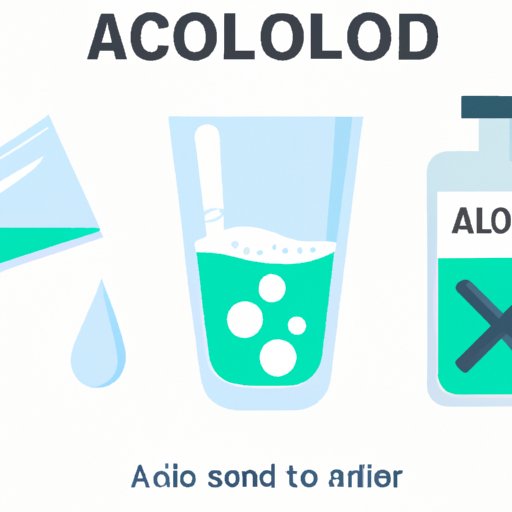
Introduction
Many people have experienced the sensation of feeling hot or flushed after drinking alcohol. This phenomenon, also known as alcohol-induced heat or alcohol flush, is a common occurrence but often misunderstood. This article explores the science behind why alcohol makes you hot and provides guidance for individuals who tend to feel too hot after consuming alcohol.
Examine the Physiological Effects of Alcohol
When alcohol is consumed, it enters the bloodstream and is quickly distributed throughout the body. It affects various physiological processes that can lead to feelings of warmth and flushing. The amount of alcohol consumed, the speed of consumption, and individual differences can all impact the severity of these effects.
Analyze the Role of Blood Vessels
Alcohol has a vasodilating effect on the body. This means that it causes blood vessels to widen, allowing more blood to flow through them. As a result, blood is diverted to the skin’s surface, leading to increased blood flow and heat exchange between the body and the environment.
Explore the Impact of Metabolism
When alcohol enters the liver, it is broken down by enzymes into acetaldehyde, a toxic substance that causes various physiological effects. This process increases metabolic activity, which can generate heat and contribute to feelings of warmth and flushing.
Consider the Impact of Dehydration
Alcohol is a diuretic, which means that it increases fluid loss from the body. This can lead to dehydration, which can exacerbate feelings of warmth and flushing. Dehydration can also cause other complications, such as headaches and dizziness.
Evaluate the Gender and Age Factor
Women and older individuals tend to experience alcohol-induced heat and flushing more often than men or younger individuals. This could be due to various factors, such as differences in body composition, hormonal differences, or a decreased ability to metabolize alcohol.
Discuss the Effect of Alcohol on One’s Perception
Alcohol can also alter people’s perception of temperature. It can cause individuals to perceive the environment as warmer than it actually is, which can exacerbate feelings of heat. This effect is thought to be due to alcohol’s impact on the nervous system, which can affect the brain’s ability to register and process temperature changes.
Provide Guidance for People Who Struggle with Feeling Too Hot After Drinking
Individuals who tend to feel too hot when consuming alcohol can take various steps to mitigate these effects. One of the most important steps is to stay hydrated by drinking plenty of water before, during, and after drinking alcohol. It is also advisable to avoid spicy or salty foods that can exacerbate feelings of warmth and to opt for lightweight and breathable clothing.
Conclusion
Alcohol-induced heat and flushing are a common occurrence among people who consume alcohol. The many physiological effects of alcohol, such as blood vessel dilation, metabolism, and dehydration, can all contribute to the severity of these effects. Understanding the science behind these effects and taking steps to mitigate them can help individuals who struggle with feeling too hot after drinking alcohol.
Remember that moderation and responsible drinking are also critical components of avoiding uncomfortable heat and flushing sensations when drinking alcohol.




